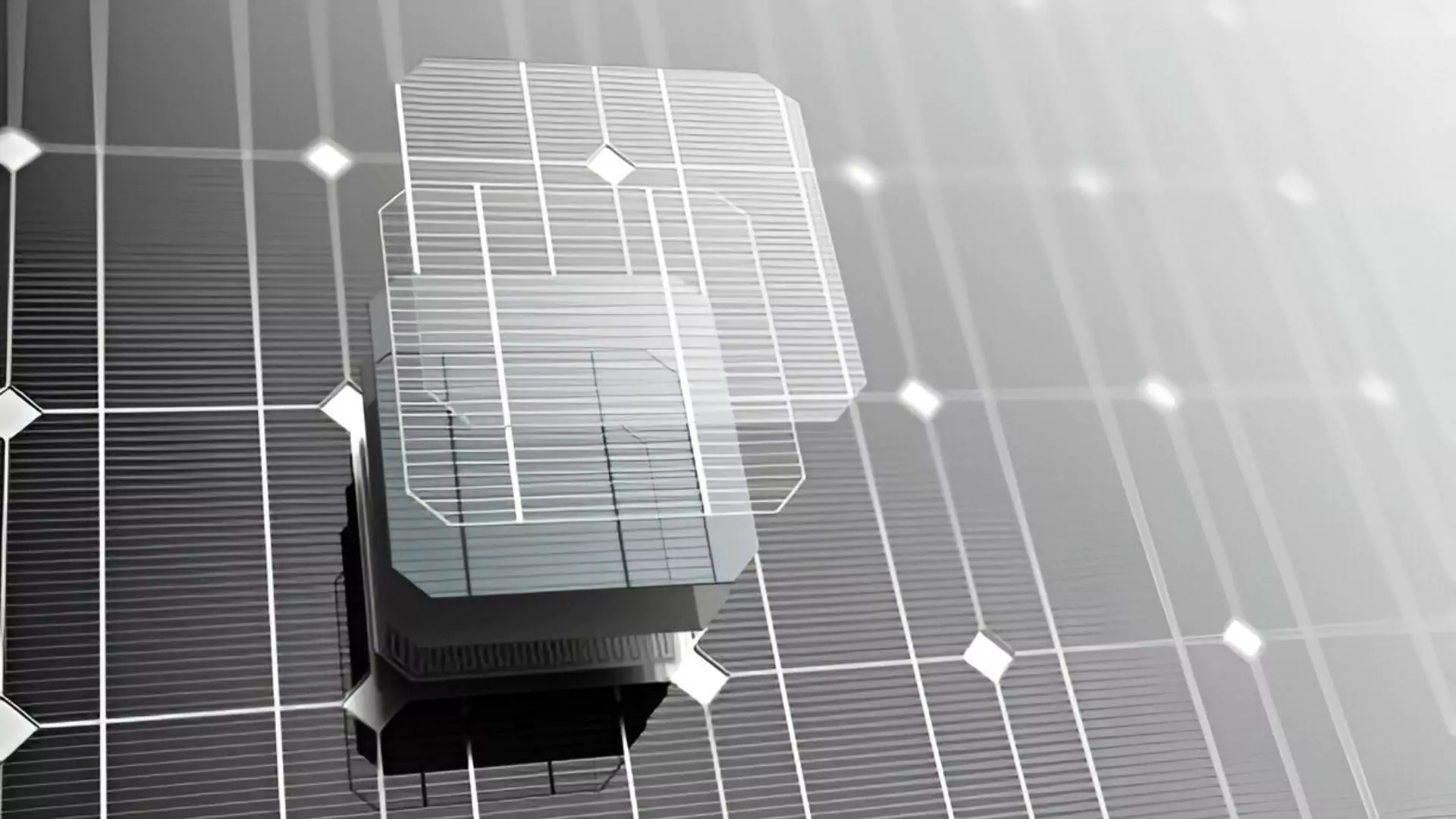🔥 Quick Decision Guide: Find Your Perfect Solar Panel in 30 Seconds
| Your Situation | Best Panel Type | Why |
|---|---|---|
| Small roof, need max power | Monocrystalline | 24% efficiency |
| Need electricity + hot water | PVT Solar Panels | Dual energy production |
| Large roof, tight budget | Polycrystalline | Lower cost per watt |
| Ground mount system | Bifacial | 30% more power |
The Money Shot – Solar Panel Efficiency Comparison Chart
Solar Panel Efficiency Rankings
35%
Coming 2025-2030
30%
Lab testing phase
24%
Available now
What Solar Panel Efficiency Means for Your Wallet
Solar panel efficiency determines how much electricity you generate per square foot of roof space. For example, a 24% efficient monocrystalline panel produces 24 watts of power for every 100 watts of sunlight it receives. Higher efficiency means more power from less space, which translates to bigger savings on your electricity bill.
“In 2025, we’re seeing efficiency improvements across all solar technologies. However, homeowners should focus on the total value proposition rather than just efficiency numbers. Sometimes a slightly less efficient panel with better warranties or lower costs provides better returns.”
— Dr. Sarah Chen, Solar Energy Research Institute
The Big 4: Solar Panels Available Now
Monocrystalline Solar Panels (Most Popular Choice)
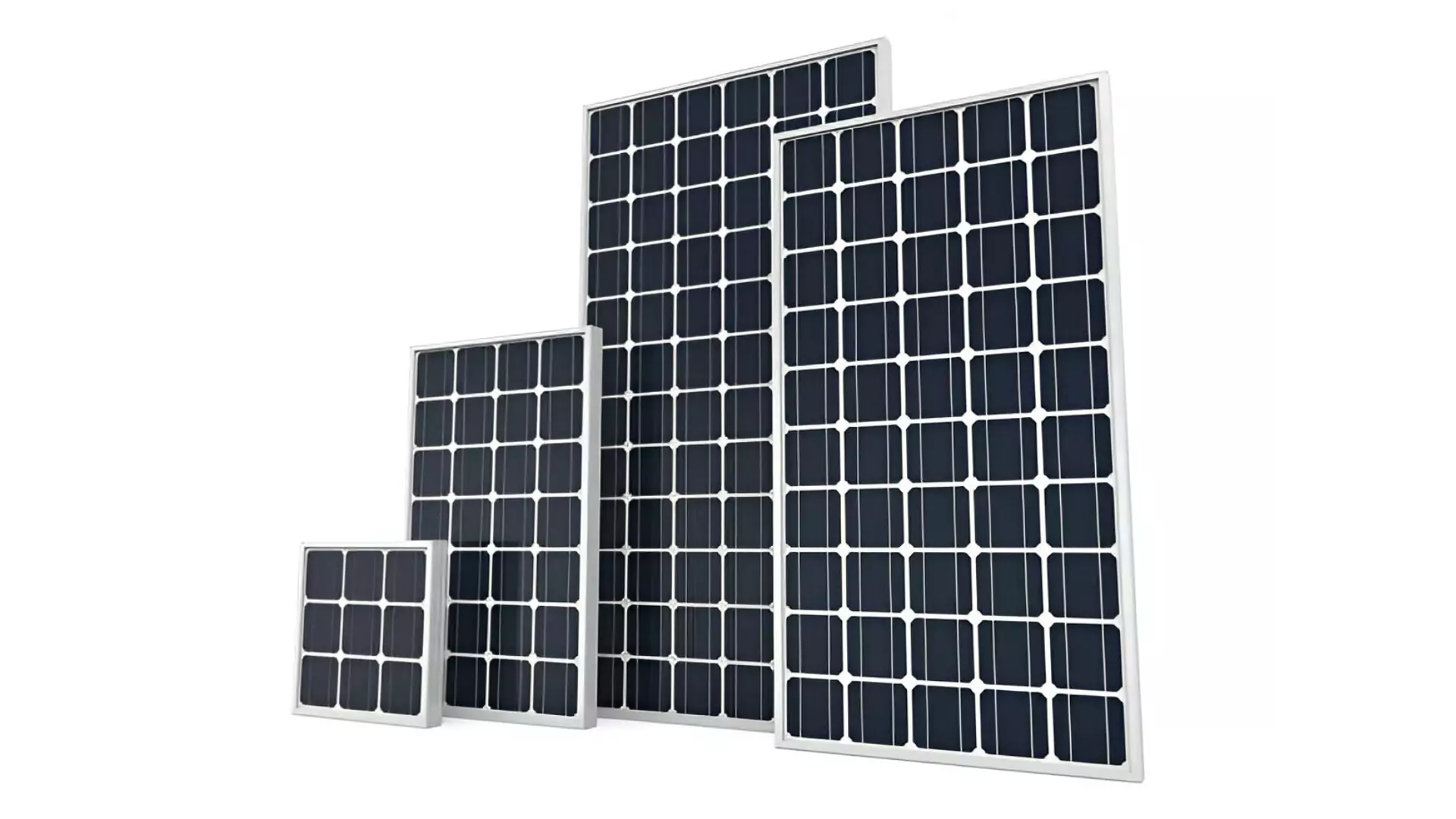
What Makes Monocrystalline Panels Special
Monocrystalline solar panels are made from single-crystal silicon, giving them their distinctive uniform black appearance. These panels currently dominate over 90% of the solar market in 2025 because they offer the best combination of efficiency, reliability, and aesthetics for residential installations.
Performance and Cost Breakdown
- Efficiency Range: 17-24% (industry-leading)
- Cost per Watt: $1.00-$1.50
- Market Share: >90%
- Expected Lifespan: 25-30 years
- Power Output: 300-450 watts per panel
Why Homeowners Choose Monocrystalline
These panels excel in limited roof space situations. For instance, if you have a small roof but high electricity bills, monocrystalline panels can generate more power per square foot than any other commercially available option. Additionally, they perform better in low-light conditions, making them ideal for areas with occasional cloudy weather.
Polycrystalline Solar Panels (Budget Option)
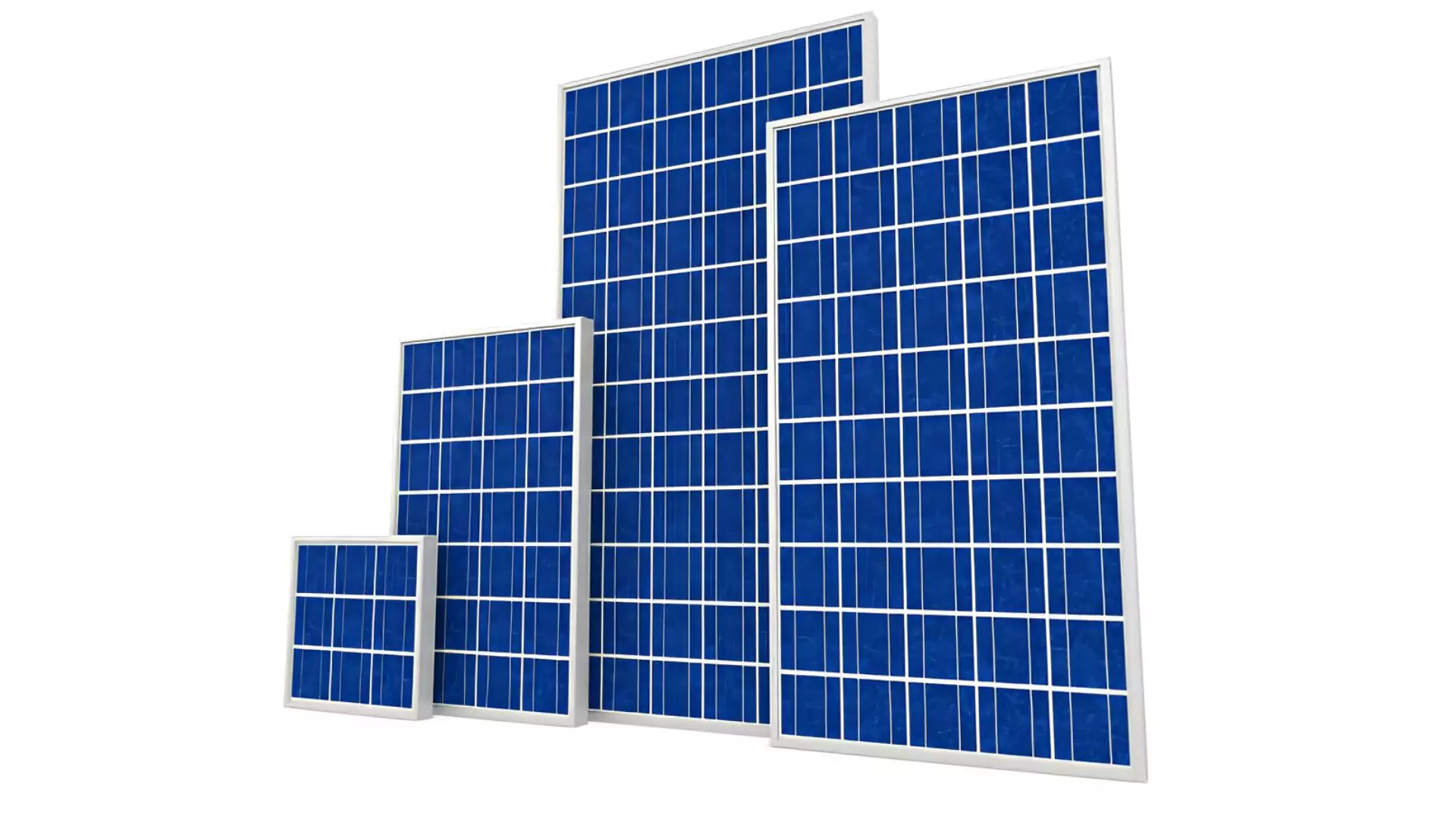
The Declining Market Reality
Polycrystalline panels are made from multiple silicon crystals, creating their characteristic blue, speckled appearance. However, their market share has dramatically declined to less than 5% in 2025 as manufacturers focus on more efficient technologies. Most major solar companies have phased out polycrystalline production.
When Polycrystalline Still Makes Sense
Despite their declining popularity, polycrystalline panels can still be a viable option for specific situations. If you have abundant roof space and a very tight budget, these panels offer decent performance at lower upfront costs.
Key Specifications
- Efficiency Range: 15-17%
- Cost per Watt: $0.60-$0.90
- Market Share: <5%
- Expected Lifespan: 25-30 years
- Availability: Limited, mostly older inventory
Thin-Film Solar Panels (Special Applications)
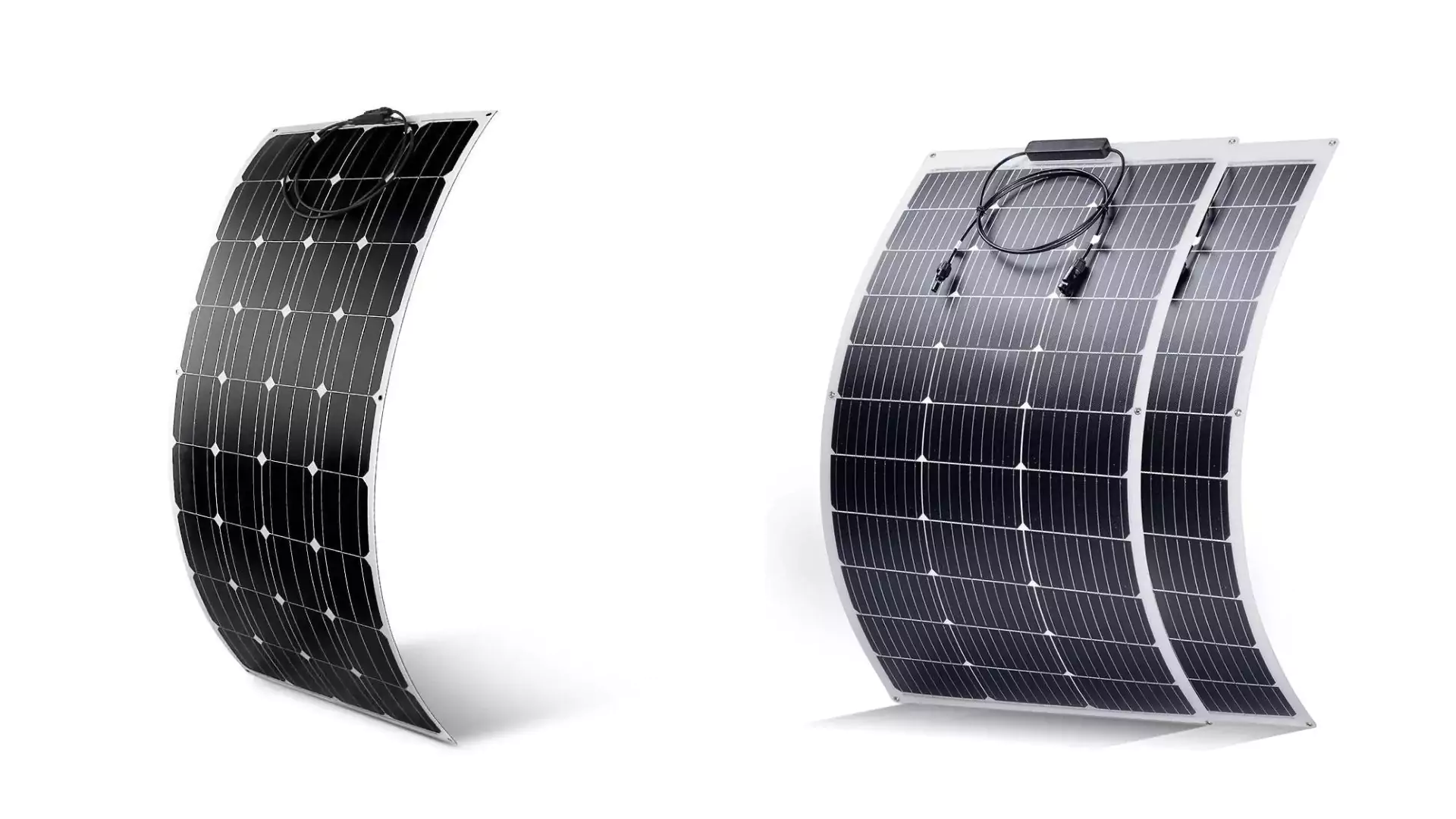
Understanding Thin-Film Technology
Thin-film solar panels use layers of photovoltaic materials like cadmium telluride (CdTe), copper indium gallium selenide (CIGS), or amorphous silicon deposited on substrates. These panels are incredibly lightweight and flexible, making them perfect for specialized applications where traditional rigid panels won’t work.
Unique Advantages of Thin-Film
The biggest advantage of thin-film panels is their versatility. They can be integrated into building materials, curved surfaces, and portable applications. Furthermore, they maintain better performance in high-temperature conditions compared to crystalline silicon panels, making them suitable for hot climates.
Performance Specifications
- Efficiency Range: 10-20% (CdTe performs best at 18%)
- Cost per Watt: $0.50-$0.80
- Market Share: ~5%
- Expected Lifespan: 20-25 years
- Weight: 50% lighter than crystalline panels
PVT Solar Panels (Electricity + Hot Water)
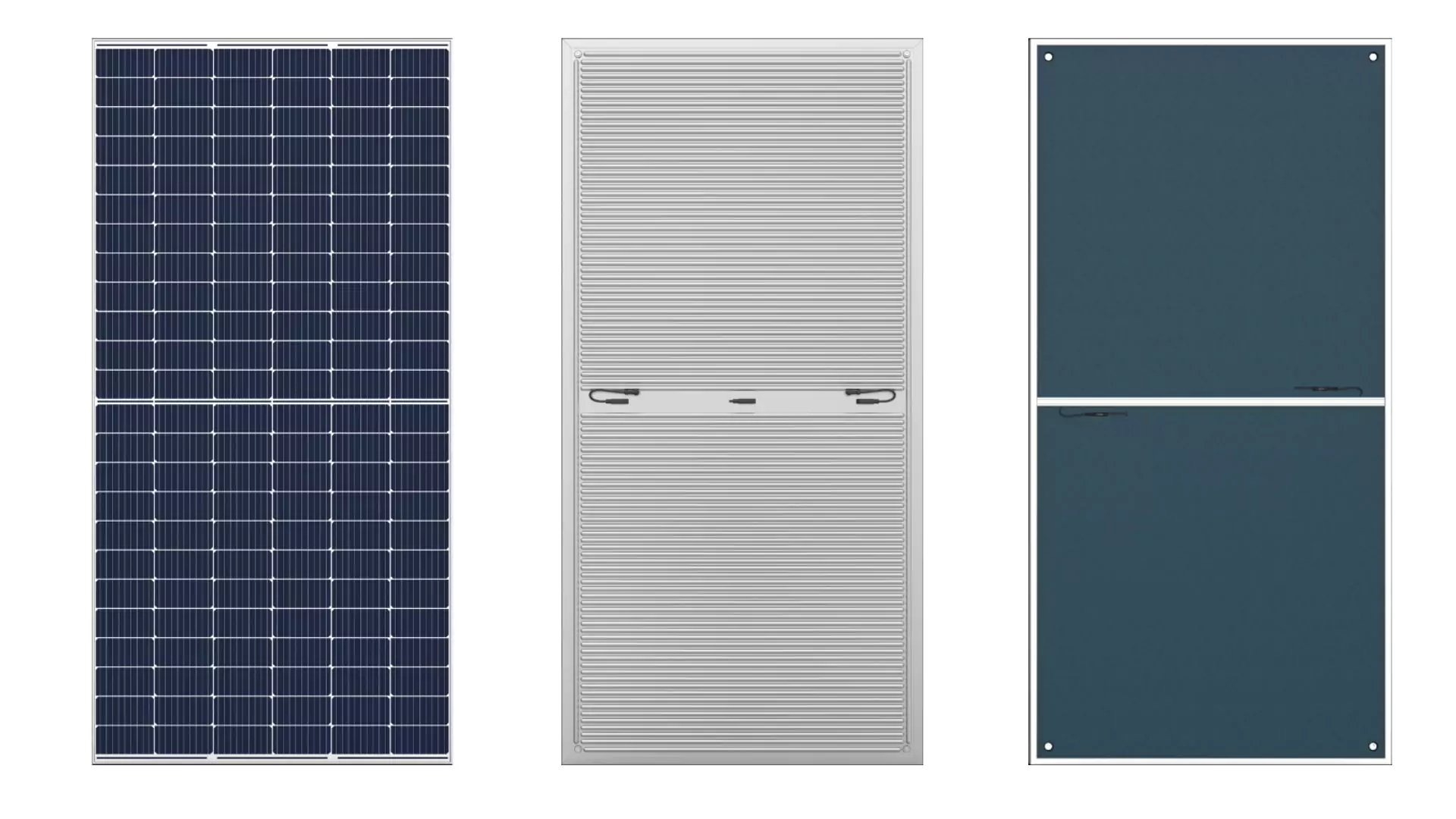
Revolutionary Hybrid Technology
PVT (Photovoltaic-Thermal) solar panels represent the cutting edge of dual-energy systems. These innovative panels combine traditional solar cells with thermal collectors, allowing you to generate both electricity and hot water from the same installation. This makes them incredibly space-efficient for homes with limited roof area but high energy demands.
How PVT Systems Work
The system works by placing photovoltaic cells on top to capture sunlight for electricity generation, while a thermal collection system underneath captures heat that would otherwise be wasted. This thermal system actually helps cool the solar cells, which improves their electrical efficiency by 3-5%.
Performance and Investment Details
- Electrical Efficiency: 18-20%
- Thermal Efficiency: 60-70%
- Combined Total Efficiency: Up to 90%
- Cost per Watt: $1.50-$2.00
- Market Share: 2-3%
- Expected Lifespan: 25-30 years
Real-World Benefits for Homeowners
PVT panels can provide 60-80% of a typical home’s hot water needs while generating electricity. For large families or homes with pools and spas, this dual benefit creates faster payback periods compared to separate solar and water heating systems.
“PVT technology is finally reaching commercial viability in 2025. We’re seeing 15-20% faster payback periods for homeowners who need both electricity and hot water, especially in colder climates where water heating costs are significant.”
— Mark Rodriguez, Renewable Energy Consultant
Advanced Options: Premium Solar Technologies
Bifacial Solar Panels
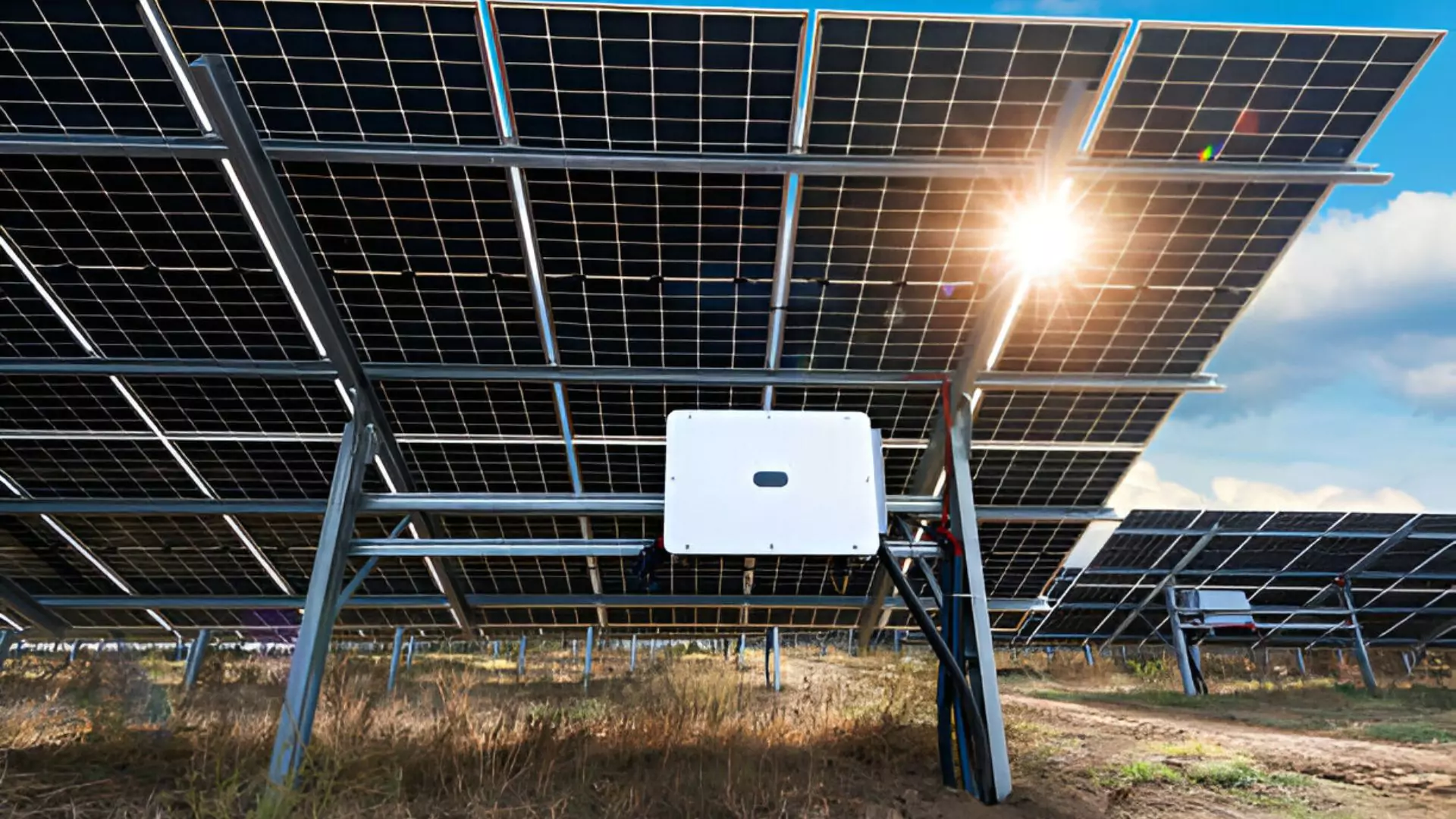
Double the Surface, Double the Power
Bifacial solar panels generate electricity from both their front and back surfaces, making them incredibly efficient for the right applications. The front side captures direct sunlight like traditional panels, while the back side harvests reflected light from surfaces below, potentially increasing total energy output by up to 30% in optimal conditions.
Where Bifacial Panels Shine
These panels work best in ground-mounted installations where light can reflect off concrete, gravel, or snow underneath. They’re also excellent for commercial flat roofs with white membrane surfaces. However, they’re less effective on traditional residential sloped roofs where the back side receives limited reflected light.
Performance Specifications
- Efficiency Range: 18-22% (front side)
- Bifacial Gain: 10-30% additional power
- Cost per Watt: $0.90-$1.30
- Market Share: ~10%
- Expected Lifespan: 25-30 years
- Best Applications: Ground mounts, commercial roofs
Installation Considerations
Bifacial panels require specialized mounting systems that allow light to reach the back surface. They also need higher installation clearance from the roof or ground, which can increase installation costs. However, the additional energy production often justifies the extra investment in suitable applications.
HJT (Heterojunction Technology) Solar Panels
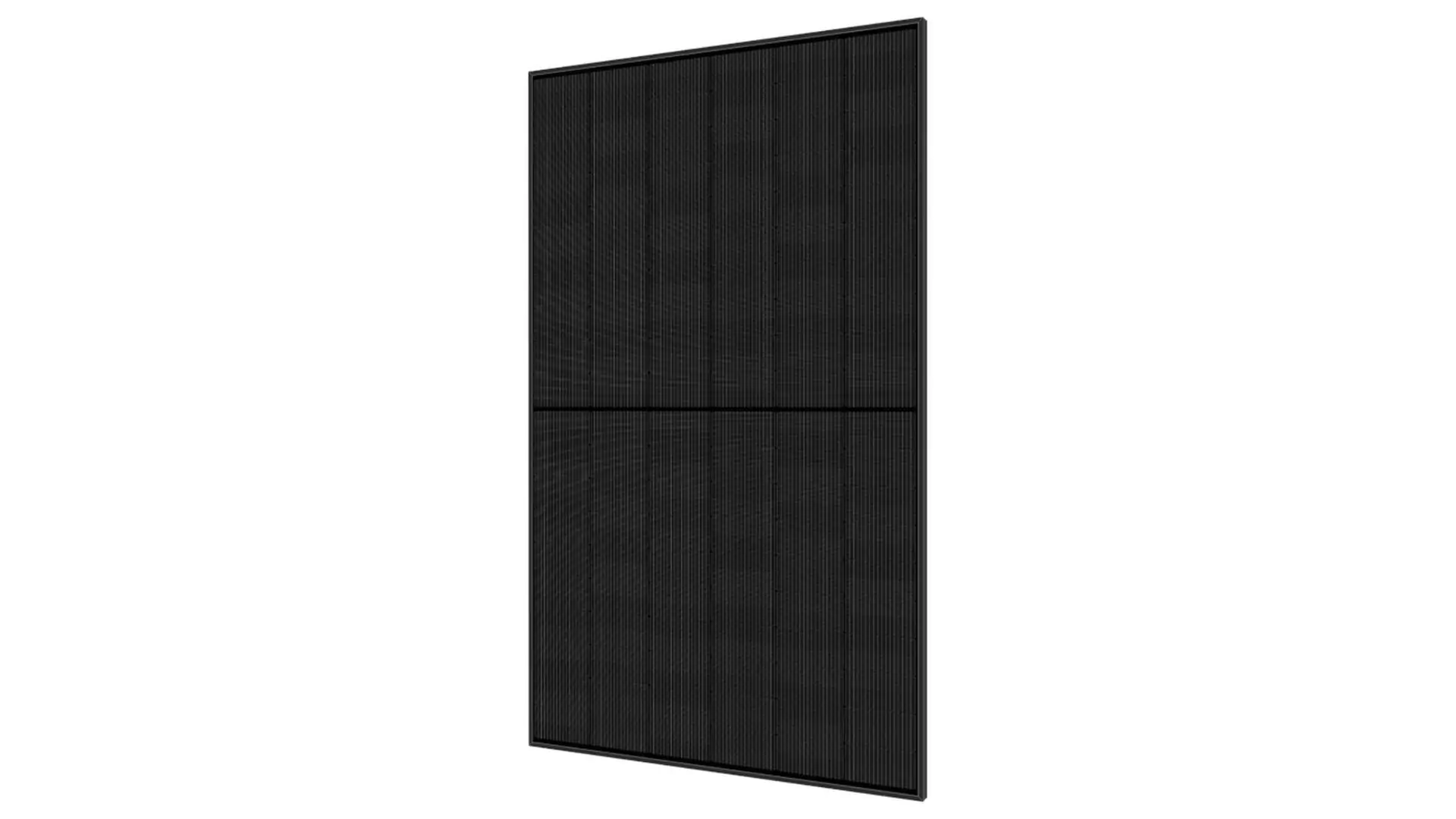
The Best of Both Worlds
HJT (Heterojunction Technology) panels combine crystalline silicon with thin-film amorphous silicon layers, creating a hybrid that delivers exceptional performance. These panels achieve 22-24% efficiency while maintaining excellent temperature coefficients, meaning they lose less power in hot weather compared to traditional panels.
Premium Performance Features
HJT panels offer several advantages over conventional monocrystalline panels. They have lower degradation rates (typically 0.25% per year vs. 0.5% for standard panels), better low-light performance, and many models feature bifacial capabilities. This combination makes them ideal for long-term investments.
Technology Specifications
- Efficiency Range: 22-24%
- Cost per Watt: $1.00-$1.40
- Market Share: ~5% (growing rapidly)
- Expected Lifespan: 30+ years
- Temperature Coefficient: -0.24%/°C (excellent)
- Annual Degradation: <0.25%
Investment Considerations
While HJT panels cost more upfront than standard monocrystalline panels, their superior performance and longer lifespan often provide better returns over 25-30 years. They’re particularly valuable in hot climates where temperature performance matters most.
“HJT technology represents the next evolution in silicon solar cells. We’re seeing 15-20% better energy yield in real-world conditions compared to standard panels, especially in hot climates. By 2027, I expect HJT to capture 20% of the premium residential market.”
— Dr. Jennifer Liu, Photovoltaic Technology Institute
Future Tech: Coming Soon Solar Technologies
Perovskite Solar Panels
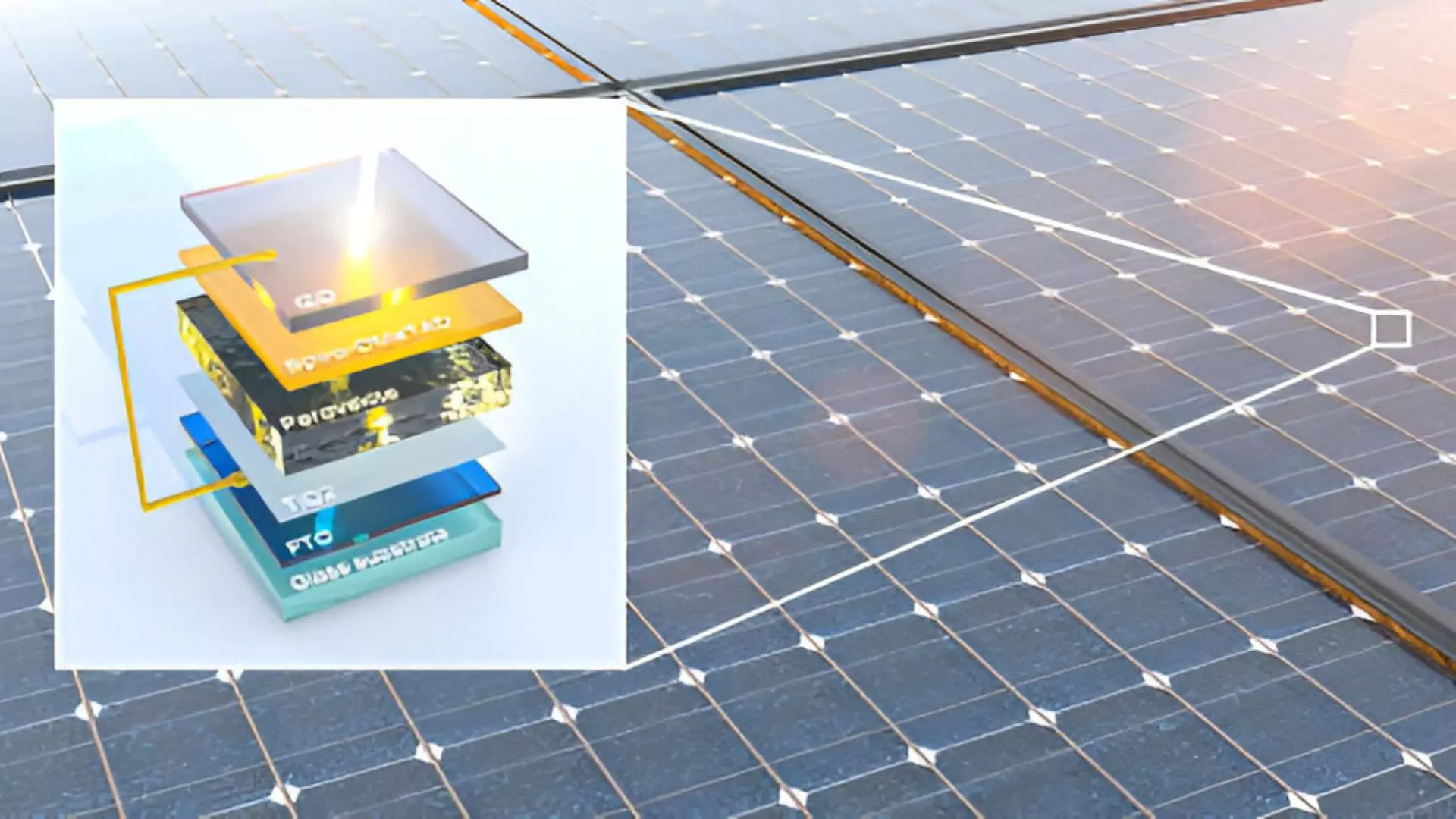
The Game-Changing Technology
Perovskite solar panels represent one of the most promising emerging technologies in photovoltaics. These panels use materials with a unique crystal structure called perovskite, which offers exceptional light absorption properties. Laboratory efficiencies have reached 30.6%, surpassing many traditional silicon technologies.
Current Development Status
While perovskite panels show incredible promise, they face significant stability challenges. The materials are sensitive to moisture, heat, and UV radiation, causing degradation over time. However, researchers are making rapid progress with encapsulation techniques and material improvements to address these issues.
Future Potential
- Lab Efficiency: 20-30% (record: 30.6%)
- Projected Cost: $0.30-$0.50 per watt (when commercial)
- Market Availability: 2025-2030
- Market Projection: 10-15% by 2030
- Key Advantage: Low-cost, high-efficiency potential
What This Means for Homeowners
When perovskite panels become commercially available, they could dramatically reduce solar installation costs while providing higher efficiency than current technologies. However, longevity and reliability remain question marks that need resolution before widespread adoption.
Tandem Solar Cells
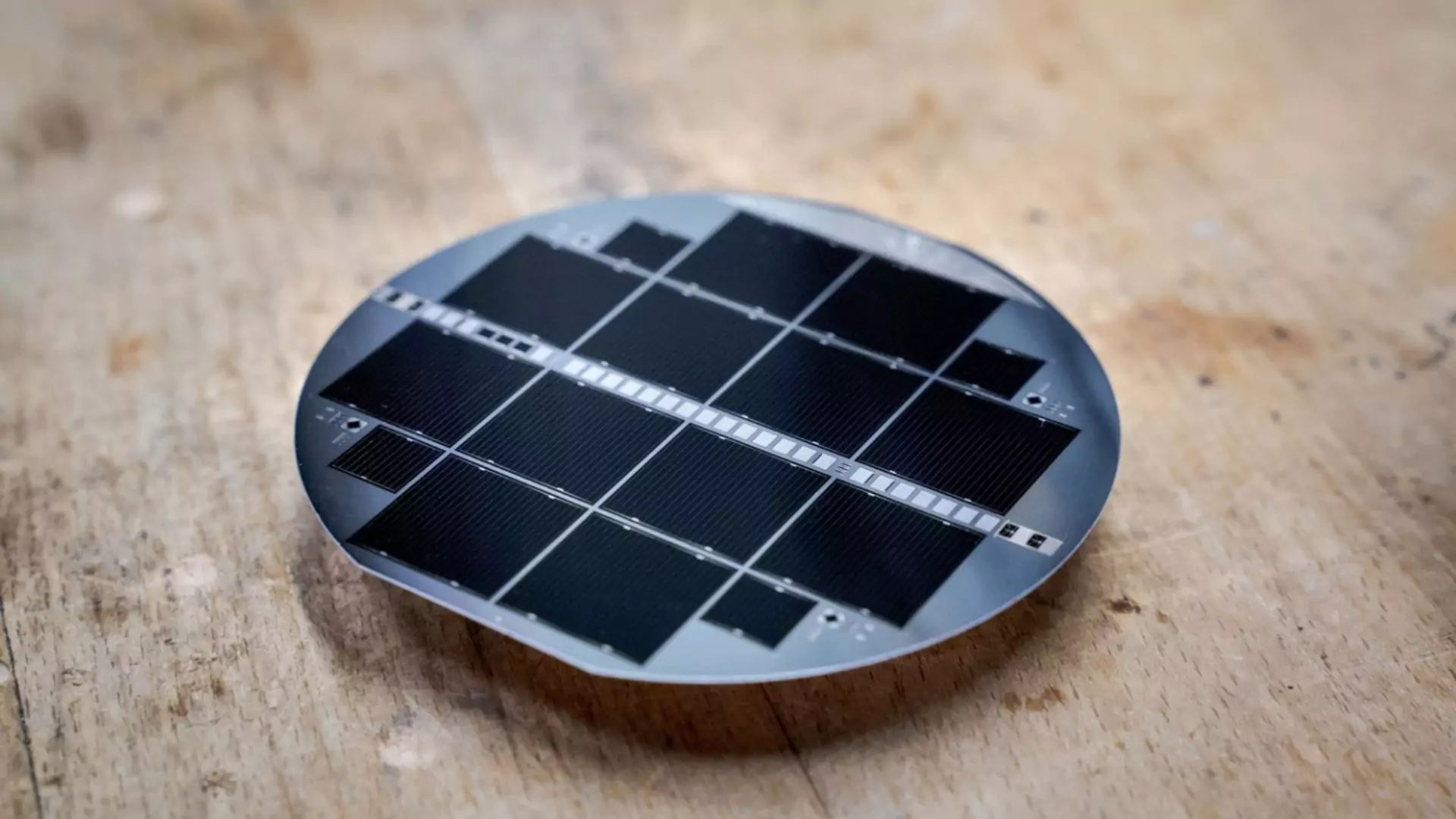
Breaking the Silicon Efficiency Barrier
Tandem solar cells combine two or more photovoltaic materials to capture a broader spectrum of sunlight than single-junction cells. The most promising combination pairs perovskite with silicon, achieving record efficiencies of 34.85% in 2025. This breakthrough surpasses the theoretical limit of single-junction silicon cells at 29.4%.
How Tandem Technology Works
Tandem cells stack different materials that absorb different wavelengths of light. The top layer captures high-energy photons (blue light), while the bottom layer harvests lower-energy photons (red light) that pass through. This design maximizes energy conversion from the entire solar spectrum.
Commercial Timeline and Potential
- Current Efficiency: 30-35% (perovskite-silicon)
- All-Perovskite Tandems: >29% efficiency
- Cost per Watt: N/A (not yet commercial)
- Market Share (2025): <1% (research phase)
- Commercial Availability: 2027-2030
Future Impact on Solar Industry
When tandem cells become commercially viable, they could revolutionize solar energy by providing ultra-high efficiency in compact installations. This technology will be particularly valuable for space-constrained applications like urban rooftops and electric vehicle integration.
Comparing All Solar Panel Types
Complete Performance Comparison Table
| Panel Type | Efficiency (%) | Cost per Watt ($) | Lifespan (years) | Best For |
|---|---|---|---|---|
| Monocrystalline | 17-24 | 1.00-1.50 | 25-30 | Limited space, high efficiency |
| Polycrystalline | 15-17 | 0.60-0.90 | 25-30 | Budget-conscious, large space |
| Thin-Film (CdTe) | 15-18 | 0.50-0.80 | 20-25 | BIPV, portable applications |
| PVT Solar | 18-20 (+ thermal) | 1.50-2.00 | 25-30 | Electricity + hot water needs |
| Bifacial | 18-22 | 0.90-1.30 | 25-30 | Utility-scale, ground mounts |
| HJT | 22-24 | 1.00-1.40 | 30+ | Long-term investment, high performance |
| Perovskite | 20-30 | N/A | N/A | Future high-efficiency needs |
| Tandem | 30-35 | N/A | N/A | Ultra-high efficiency, future applications |
ROI Comparison: 10-Year Savings Analysis
Based on a typical 6kW residential system installation:
- Monocrystalline: $18,000 savings (higher upfront, excellent returns)
- PVT Solar: $22,000 savings (includes hot water savings)
- HJT: $19,500 savings (premium performance, longer lifespan)
- Bifacial: $16,000 savings (ground-mount applications only)
- Polycrystalline: $14,000 savings (lower upfront, decent returns)
How to Choose the Right Solar Panel for Your Needs
Step 1: Assess Your Roof Space and Orientation
Start by measuring your available roof space and determining its orientation. South-facing roofs with minimal shading are ideal for solar installations. If you have limited space (less than 500 square feet), high-efficiency panels like monocrystalline or HJT will maximize your energy production.
Step 2: Determine Your Energy Requirements
Review your past 12 months of electricity bills to calculate your annual energy consumption. This will help size your system appropriately. Homes with high energy usage may benefit from the most efficient panels available, even at higher upfront costs.
Step 3: Set Your Budget and Timeline
Consider both upfront costs and long-term savings. While premium panels like HJT or PVT cost more initially, they often provide better returns over 25-30 years. Factor in available tax incentives and financing options when making your decision.
Step 4: Consider Special Requirements
- Hot Water Needs: Choose PVT panels if you have high hot water usage
- Aesthetic Concerns: Monocrystalline panels offer the sleekest appearance
- Ground Mount Options: Consider bifacial panels for maximum output
- Hot Climate: HJT panels perform better in high temperatures
- Future-Proofing: Invest in emerging technologies for long-term gains
Professional Consultation Benefits
While this guide provides comprehensive information, consulting with a qualified solar installer ensures you get a system tailored to your specific needs, local climate conditions, and utility requirements. They can also help navigate local permitting and interconnection processes.
“The best solar panel is the one that matches your specific situation. I always tell homeowners to think beyond just efficiency numbers. Consider your roof space, energy needs, budget, and long-term goals. Sometimes a slightly less efficient panel with better warranties or lower costs provides superior value.”
— Mike Thompson, Certified Solar Installer (25 years experience)
People Also Ask
What are the different types of solar panels?
The main types available are:
- Monocrystalline: High efficiency (17-24%), ideal for limited space
- Polycrystalline: Lower efficiency (15-17%), more affordable
- Thin-Film: Flexible and lightweight, suitable for special applications
- PVT Solar: Generates both electricity and hot water
- Bifacial: Captures light on both sides for increased output
- HJT: Advanced technology with high efficiency and durability
- Perovskite: Emerging high-efficiency technology (coming 2025-2030)
- Tandem: Ultra-high efficiency combining multiple materials
Which solar panel type is the most efficient?
Tandem solar cells (perovskite-silicon) are the most efficient with record efficiencies of 34.85%. For commercially available panels, HJT and premium monocrystalline panels reach up to 24% efficiency.
Are monocrystalline solar panels better than polycrystalline?
Yes, monocrystalline panels are superior in almost every aspect. They offer higher efficiency (17-24% vs 15-17%), better low-light performance, and sleeker aesthetics. While more expensive upfront, they provide better long-term value, which is why they dominate over 90% of the market in 2025.
What are the advantages of PVT solar panels?
PVT panels offer unique advantages:
- Dual Energy Production: Generate electricity and hot water simultaneously
- Space Efficiency: Maximum energy per square foot (up to 90% total efficiency)
- Improved PV Performance: Thermal cooling increases electrical output
- Faster Payback: Dual savings from electricity and water heating
When will perovskite solar panels be available commercially?
Perovskite panels are expected to reach commercial availability between 2025-2030. Several companies are working on solving stability issues, with some planning pilot production by 2025 and mass production by 2027-2030.
How do bifacial solar panels work?
Bifacial panels have photovoltaic cells on both front and back surfaces. The front captures direct sunlight while the back harvests reflected light from surfaces below, potentially increasing total output by 10-30% depending on installation conditions.
What is the lifespan of different solar panel types?
- Monocrystalline & Polycrystalline: 25-30 years
- Thin-Film: 20-25 years
- PVT Solar: 25-30 years
- HJT: 30+ years (lowest degradation rates)
- Bifacial: 25-30 years
- Perovskite & Tandem: N/A (still in development)
Which solar panel type is best for residential use?
For most homes, monocrystalline panels are the best choice due to their high efficiency, proven reliability, and suitability for limited roof space. However, consider PVT panels if you need hot water, or HJT panels for premium long-term performance.
How do I choose the right solar panel for my home?
Follow this decision framework:
- Assess roof space: Small roof = high-efficiency panels needed
- Calculate energy needs: Review 12 months of electricity bills
- Set budget: Balance upfront costs with long-term savings
- Consider special needs: Hot water, aesthetics, climate factors
- Consult professionals: Get tailored recommendations
Conclusion: Making the Smart Solar Choice
Choosing the right solar panel technology is crucial for maximizing your investment in renewable energy. Monocrystalline panels remain the gold standard for most residential installations, offering the best balance of efficiency, reliability, and cost-effectiveness. However, emerging technologies like PVT solar panels and HJT panels provide compelling advantages for specific applications.
For homeowners with limited roof space, high-efficiency options like monocrystalline or HJT panels deliver maximum power output. Those with dual energy needs should seriously consider PVT panels for their ability to generate both electricity and hot water. Meanwhile, exciting future technologies like perovskite and tandem cells promise even greater efficiencies in the coming years.
The solar industry continues evolving rapidly, with efficiency improvements and cost reductions making solar energy more accessible than ever. By understanding the characteristics and applications of each panel type, you can make an informed decision that aligns with your energy goals, budget, and long-term objectives.
Remember: The federal solar tax credit of 30% is available through 2032, but many state and local incentives are limited-time offers. The sooner you act, the more you can save on your solar investment.
Have questions about solar panel types or need personalized advice? Contact our solar experts for a free consultation tailored to your specific needs and location.

